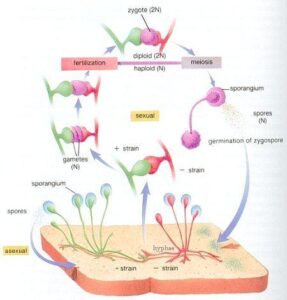SPOILAGE OF TOMATO AND MICROBIOLOGICAL PROFILING

Olipriya Deb
Deb Villa, 148/6 Mali Bagan, Lane no. 7, Kaikhali, Kolkata- 700052
The deterioration of raw vegetables and fruits may result from physical fac- tors, action of their own enzymes, microbial action, or combinations of these agencies. Mechanical damage resulting from action of animals, birds, or insects or from bruising, wounding, bursting, cutting, freezing, desiccation, or other mishandling may predispose toward increased enzymatic action or the entrance and growth of microorganisms. Diseases of vegetables and fruits may result from the growth of an organism that obtains its food from the host and usually damages it or from adverse en- vironmental conditions that cause abnormalities in functions and structures of the vegetable or fruit.

My chosen item for spoilage was tomato.
The market disease of tomatoes are Alternaria rot, bacterial canker, bacterial spot, gray mold rot, green mold rot and rhizopus rot.
-
Alternaria Rot: Caused by Alternaria tenuis and other species. Areas become greenish -brown early in the growth of the mold and later turn to brown or black spots.

-
Bacterial Soft Rot: Caused by Erwinia carotovora and related species, which are fermenters of pectins. Pseudomonas marginalis and Clostridium and Bacillus spp. have also been isolated from these rots. It results in a water-soaked appearance, a soft, mushy consistency, and often a bad odor
-
Gray Mold Rot: Caused by species of Botrytis, e.g., B. cinerea, a name derived from the gray mycelium of the mold. It is favored by high humidity and a warm temperature
-
Green Mold Rot: caused usually by species of Cladosporium but sometimes by other green-spored molds, e.g., Trichoderma.
-
Rhizopus Rot: Caused by species of Rhizopus, e.g., R. stolonifer. A rot results that often is soft and mushy. The cottony growth of the mold with small, black dots of sporangia often covers masses of the foods.
Daily Observation of Spoiled Tomato
Day 1. The tomato had started dehydrating and the sides have become wrinkled. Shrinkage of size can be observed. The core has dried up and microbial activity must have started inside the tomato.
Day 2. White cottony growth can be seen on on side of the tomato along with presence of black spots. Dehydration and shrinkage is constant.
Day 3. There is proliferation of the white cottony growth on the whole surface area of the exposed tomato along with black underlying spots and patches. Dehydration and shrinkage is also observed. The height of the tomato has considerably decreased due to microbial host taking all the nutrients.
Day 4. Tomato has started rotting along with predominant white cottony growth with black patches. The initial part where the growth had begun has ruptures due to intense microbial activity. The core of the tomato is visible and it has become soft and mushy in consistency. This image clarifies the action of not one but several such microorganisms.
Day 5. Complete rotting of the tomato is observed along with subsiding white cottony growth and black patches. Here, action of some other microbe has taken over the cottony growth making the appearance mushy and rupturing the core. Many tiny holes can be observed on the surface most probably used for respiration and other metabolic activity of the microbe. There is presence of fowl odor along with feeding insects.
Microbiological Profiling
The tomato has experienced Rhizopus rot caused by the species of Rhizopus stolonifer.. It is very destructive to harvested fruits. Tiny, black, spherical structures are produced on stalks above the white mold. On tomatoes, Rhizopus rot appears water-soaked and may exude a clear liquid. Lesion surface may be covered with thin, cotton-like fungal structures (especially under humid conditions). Dark sporulation may crown the white tuft of Rhizopus. Mycelium can infect adjacent fruit through natural openings or mechanical wounds, creating nests of mold and diseased fruit.
Penetration: Wound causes ripe fruit to rot and give out fermentative odour. Fruit surface has extramatrical whiskery mycelium and black sporangia. Range of temp is 5, 15 and 25°C reaching disease incidence of 97-100% RH.
Spread: Air currents pathogen grows very aggressively even on refrigerated fruit. Pallets and cartons, and it may survive for months in fruit residues left in picking containers and field bins. The length of the surface wetness period needs to be longer at the lower temperatures for disease development.
References-
-
Food Microbiology (fourth edition) by Frazier and Westhoff
-
Food Spoilage Microorganisms by W. Blackburn
-
Textbook of Microbiology by D.R Arora
-
Website- agritech.tnau.ac.in
………………………………………………………………………………………………………………































![]()
















